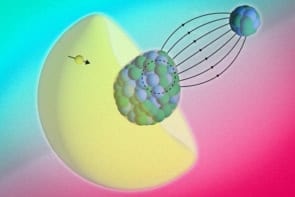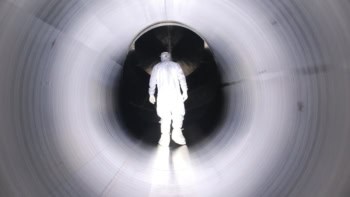NB: The publication on which this article is based has been retracted by its authors. The retraction followed an investigation into alleged scientific misconduct by one of the authors, Victor Ninov. We are leaving this article here for archival purposes.
The new elements were made by bombarding a lead-208 target with an intense beam of high- energy krypton-86 ions over an 11-day period. The krypton ions were accelerated by the 88-inch cyclotron at the Lawrence Berkeley National Laboratory in California. Three atoms of element 118 were detected, all containing 118 protons and 175 neutrons. The atoms decayed to element 116 in less than a millisecond by emitting an alpha particle, and continued to decay by alpha- particle emission all the way down to element 106. “The observation of a chain of six high-energy alpha decays within about one second unambiguously signalled the production and decay of element 118, ” said Ken Gregorich, who led the research team.
The lead-krypton scheme for producing element 118 was suggested by Robert Smolanczuk from the Soltan Institute for Nuclear Studies in Poland earlier this year. Before Smolanczuk’s calculations it was thought that the “cold fusion” technique would not be able to create elements above element 112.
Bill Richardson, head of the US Department of Energy, which runs the Berkeley laboratory, used the discovery to highlight the importance of openness at US national labs. “Scientific excellence does not recognize national boundaries, ” he said. “We will damage our ability to perform world-class science if we cut off our laboratories from the rest of the world.” Security at the labs has been increased following the recent revelations about the leaking of nuclear secrets from Los Alamos to China, and restrictions have been placed on non-US nationals working at the labs. Four of the team that discovered element 118 were born in Germany.



